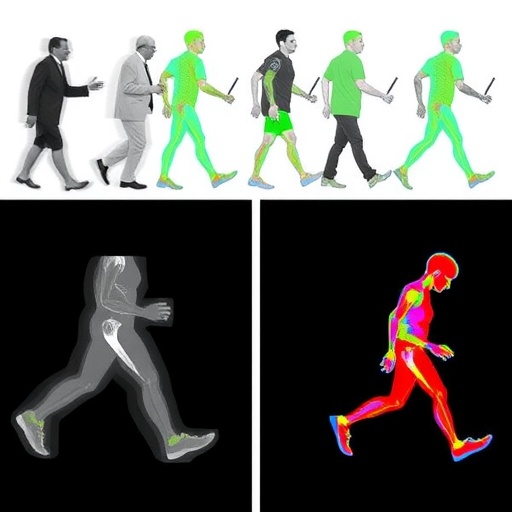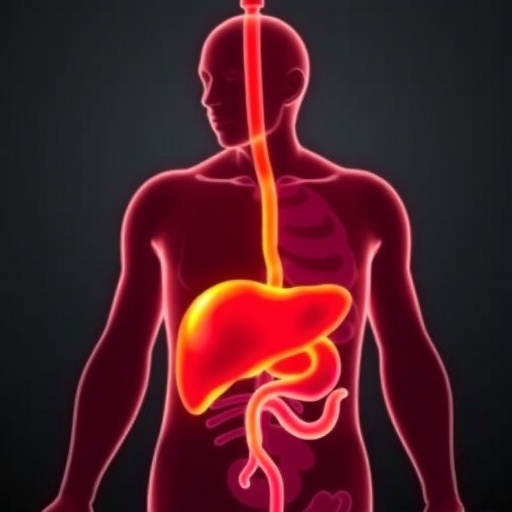In a groundbreaking study published in the journal BMC Geriatrics, researchers have explored the potential of dual-task walking as a novel method for the early detection of Alzheimer’s disease. Spearheaded by a team including R. Katagiri, Y. Yamada, and K. Shinkawa, this research highlights the importance of understanding how cognitive and motor tasks interact in individuals potentially at risk for neurodegenerative diseases. The implications of their findings could reshape how clinicians and researchers approach early diagnosis and intervention strategies for Alzheimer’s disease.
Walking is a complex task that inherently combines motor skills, cognitive function, and environmental awareness. When individuals perform additional cognitive tasks while walking—such as counting backward or reciting specific words—they may reveal underlying cognitive impairments that are not apparent when performing motor tasks alone. This dual-tasking approach mimics real-world challenges that individuals face daily, making it a relevant and practical measure for early diagnosis of Alzheimer’s pathology.
The study meticulously compares various tasks and their influence on gait variables, revealing how certain cognitive challenges can exacerbate or highlight gait disturbances. By analyzing whole-body gait variables, the researchers aimed to gain insights not only into the mechanics of walking but also into the cognitive processes that govern physical movement. Through this methodology, they hoped to uncover potential biomarkers associated with cognitive decline, offering a non-invasive and cost-effective alternative to traditional diagnostic methods.
One of the key findings of this study is the way dual-task walking can elucidate subtle motor deficits that might be overlooked during standard assessment protocols. In particular, individuals with early signs of Alzheimer’s may exhibit noticeably different gait patterns when subjected to cognitive demands while walking. Such changes in walking speed, stability, or coordination may serve as critical indicators for clinicians, enabling them to initiate further assessment and appropriate interventions if necessary.
Moreover, the variability in performance across different dual-task scenarios illustrates the complexity of cognitive-motor interactions. The research underscores that not all cognitive tasks have the same impact on gait; some may cause greater disruptions than others. This nuanced understanding of task-related influences opens the door for tailored assessments based on the individual’s specific cognitive profile, which could lead to more personalized and effective care strategies in managing Alzheimer’s disease.
Encouragingly, the researchers also emphasize that the incorporation of dual-task assessments into routine clinical evaluations could significantly enhance the early detection capabilities for Alzheimer’s. By integrating these evaluations during physical examinations, healthcare providers could benefit from immediate insights into a patient’s cognitive and motor health, facilitating timely interventions that could alter disease trajectories.
The implications of this work are profound for both individuals and the healthcare system. Early detection of Alzheimer’s can lead to earlier therapeutic interventions, which have been shown to slow the progression of cognitive decline in some cases. Therefore, refining and implementing such diagnostic tools can have widespread public health benefits, improving quality of life for countless aging individuals and alleviating the burden on healthcare systems.
In designing their research, Katagiri et al. implemented a robust methodological framework aimed at ensuring repeatability and reliability of results. Participants were recruited across varying backgrounds, ages, and health statuses, enhancing the generalizability of their findings. Additionally, advanced analytical techniques were employed to dissect the complex data related to the interaction of dual-task walking and cognitive function.
Among the researchers’ specific contributions was the identification of hallmark gait changes that are associated with cognitive decline, thus bridging the gap between physical and neurological examinations. These detectable gait patterns may serve as precursors to more pronounced cognitive impairments later in life, thereby paving the way for preventive strategies and ongoing research into how physical movement reflects neurological health.
The findings underscore the necessity for continued investigation into the relationship between motor and cognitive functions, particularly regarding aging populations. By equipping healthcare professionals with additional tools and knowledge regarding the cognitive dimensions of gait, the study supports the notion that interdisciplinary approaches can significantly enhance our understanding and management of Alzheimer’s disease.
In conclusion, the work of Katagiri, Yamada, Shinkawa, and their colleagues marks a pivotal step in the journey toward more effective strategies for the early detection of Alzheimer’s disease. It prompts a reevaluation of existing assessment protocols, encouraging a greater integration of motor and cognitive assessments in clinical settings. As researchers work to validate these findings through larger-scale studies, the potential for dual-task walking to emerge as a standard diagnostic tool grows increasingly plausible.
With Alzheimer’s disease remaining one of the most daunting public health challenges of our time, the innovations proposed in this research offer hope for transformative advances in detection, treatment, and ultimately the management of this increasingly prevalent condition. The actions taken today may well determine the trajectory of care for future generations confronted with the complexities of neurodegeneration.
By continuing to investigate the pathways linking physical and cognitive health, we can not only improve diagnostic accuracy but also cultivate a deeper understanding of how to support the aging population in maintaining their independence and quality of life.
Subject of Research: Early detection of Alzheimer’s disease through dual-task walking.
Article Title: Dual-task walking for early detection of Alzheimer’s disease: comparative analysis of tasks using whole-body gait variables.
Article References:
Katagiri, R., Yamada, Y., Shinkawa, K. et al. Dual-task walking for early detection of Alzheimer’s disease: comparative analysis of tasks using whole-body gait variables.
BMC Geriatr 25, 807 (2025). https://doi.org/10.1186/s12877-025-06389-4
Image Credits: AI Generated
DOI: 10.1186/s12877-025-06389-4
Keywords: Alzheimer’s Disease, dual-task walking, cognitive impairment, gait analysis, early detection.
Tags: Alzheimer’s disease early detectioncognitive impairments in walkingcognitive motor interaction in elderlycounting tasks and gait disturbancesdual-task walking in dementiaenvironmental awareness in gaitgait analysis in neurodegenerative diseasesimplications for Alzheimer’s diagnosisinnovative strategies for dementia interventionpractical measures for Alzheimer’s pathologyR. Katagiri Alzheimer’s researchwhole-body gait assessment





